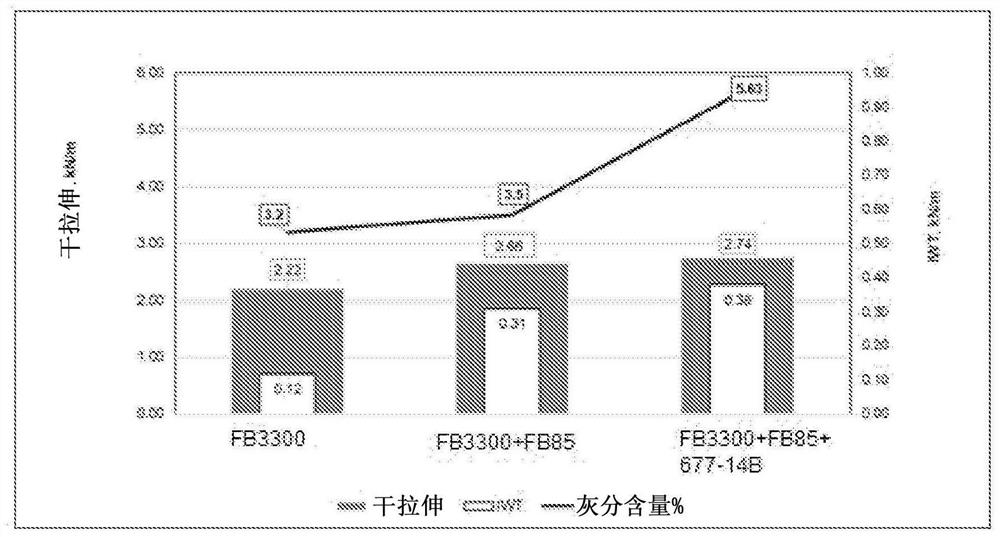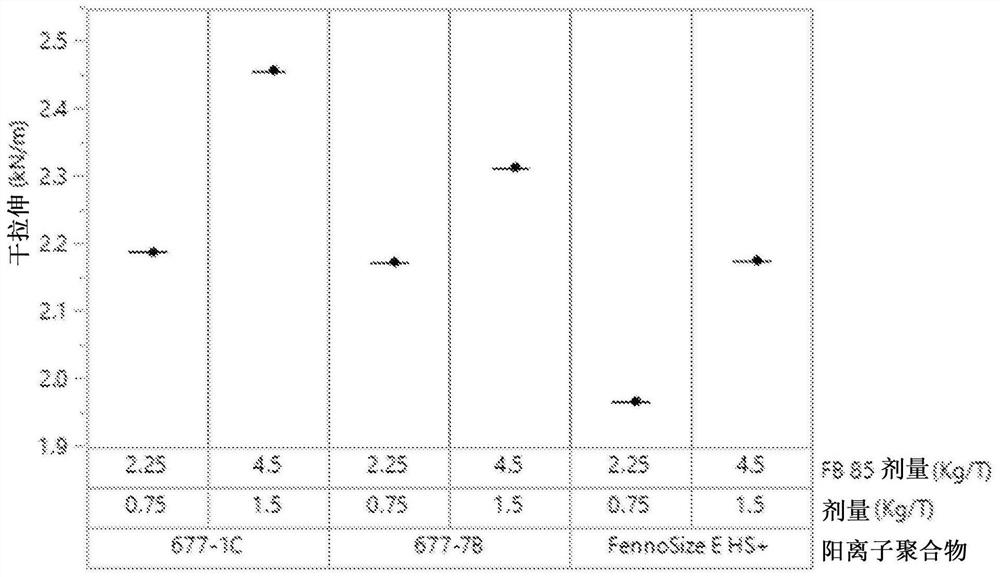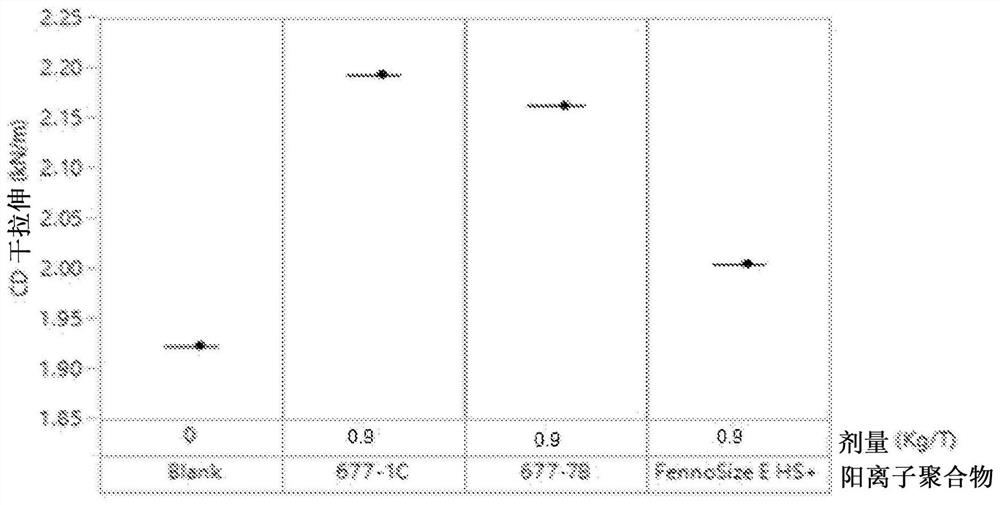Process for manufacture of paper or paperboard and paper or paperboard obtained from this process and use of cationic emulsion polymers in manufacture of paper or paperboard
A cationic polymer, paperboard technology, applied in the field of paper or paperboard, can solve the problems of deposition, concentration, etc., to achieve the effect of enhanced performance, improved dewatering rate, improved retention and/or fixation
- Summary
- Abstract
- Description
- Claims
- Application Information
AI Technical Summary
Problems solved by technology
Method used
Image
Examples
preparation example Construction
[0055] The emulsion polymerization procedure involves the preparation of two phases. The aqueous phase contains monomers, crosslinkers and chain transfer agents dissolved in deionized water, as well as other additives known to those skilled in the art, such as stabilizers and pH adjusters. The oil phase comprises a water-insoluble hydrocarbon solution of one or more surfactants. The aqueous and oil phases are then mixed and homogenized in conventional equipment until the particle size is in the range of 1.0 micron and a suitable bulk viscosity is obtained. The emulsion was then transferred to a suitable flask where it was stirred and sparged with nitrogen for about thirty minutes. A polymerization initiator such as sodium metabisulfite solution is then continuously added to the solution to start polymerization. The polymerization is allowed to exotherm to the desired temperature, which is maintained by cooling until cooling is no longer required. The finished emulsion produ...
Embodiment 1
[0087] Example 1: Emulsion polymers as GPAM strength performance enhancers
[0088] Made using 50% bleached hardwood, 50% bleached softwood and 9% PCC filler with a target basis weight of 74g / m 2 Alkaline papermaking handsheets. The pH of the headbox slurry is about 8.3. The following GPAM strength enhancing conditions were evaluated against a control of 2.27 kg / t glyoxalated polyacrylamide (GPAM; Fennobond 3300 (Kemira Oyj)):
[0089] 1) 2.27 dry kg / ton of Fennobond 3300 as a control condition,
[0090] 2) 2.27 dry kg / t Fennobond 3300 and 3.4 dry kg / t anionic polyacrylamide FB85 (Kemira Oyj) as GPAM strength promoters,
[0091] 3) 2.27 dry kg / ton Fennobond 3300, 3.4 dry kg / ton FB85 and 0.9 kg / ton emulsion polymer 677-14B.
[0092] Handsheets were prepared and tested as previously disclosed in Test Methods. The result is as figure 1 shown.
[0093] When the glyoxalated polyacrylamide Fennobond 3300 is used alone, it completely loses its dry and wet strength effect under...
Embodiment 2
[0095] Example 2: Emulsion Polymers as Reinforcers for Anionic Dry Strength Resins
[0096] In this example, the target basis weight for the handsheet was 74 gsm. The fiber furnish is made from standard laboratory pulp containing 50% softwood and 50% hardwood with no added fillers. The pulp was diluted to 0.54% with 150 ppm sulfate ions and 35 ppm calcium ions. The pH of the diluted furnish was 6.9 to 7.1. Anionic Dry Strength The ratio between the anionic polyacrylamide FennoBond 85 (FB85; Kemira Oyj) and the cationic polymer was 3:1 on dry solids basis.
[0097] Handsheets were prepared and tested as disclosed in Test Methods, supra. Polymers and their addition levels and results such as figure 2 shown. Compared with solution cationic polymer (FennoSize E HS plus Kemira Oyj), the emulsion polymer 677-1C according to the present invention provides at 2.25 kg / ton and 4.5 kg / ton respectively anionic polyacrylamide FennoBond 85 (FB85; Kemira Oyj) 11.3% and 13% dry stretch...
PUM
| Property | Measurement | Unit |
|---|---|---|
| flow consistency | aaaaa | aaaaa |
| molecular weight | aaaaa | aaaaa |
| molecular weight | aaaaa | aaaaa |
Abstract
Description
Claims
Application Information
 Login to View More
Login to View More - R&D
- Intellectual Property
- Life Sciences
- Materials
- Tech Scout
- Unparalleled Data Quality
- Higher Quality Content
- 60% Fewer Hallucinations
Browse by: Latest US Patents, China's latest patents, Technical Efficacy Thesaurus, Application Domain, Technology Topic, Popular Technical Reports.
© 2025 PatSnap. All rights reserved.Legal|Privacy policy|Modern Slavery Act Transparency Statement|Sitemap|About US| Contact US: help@patsnap.com



